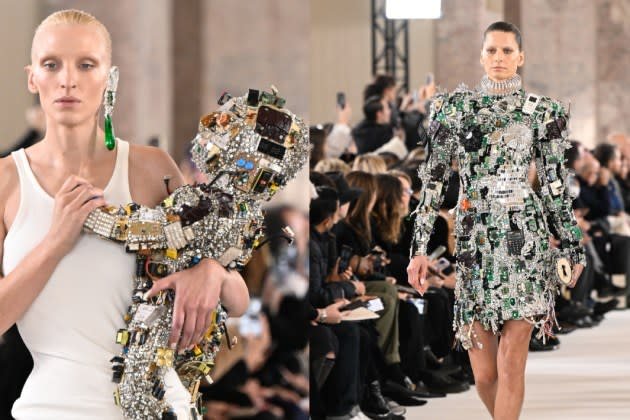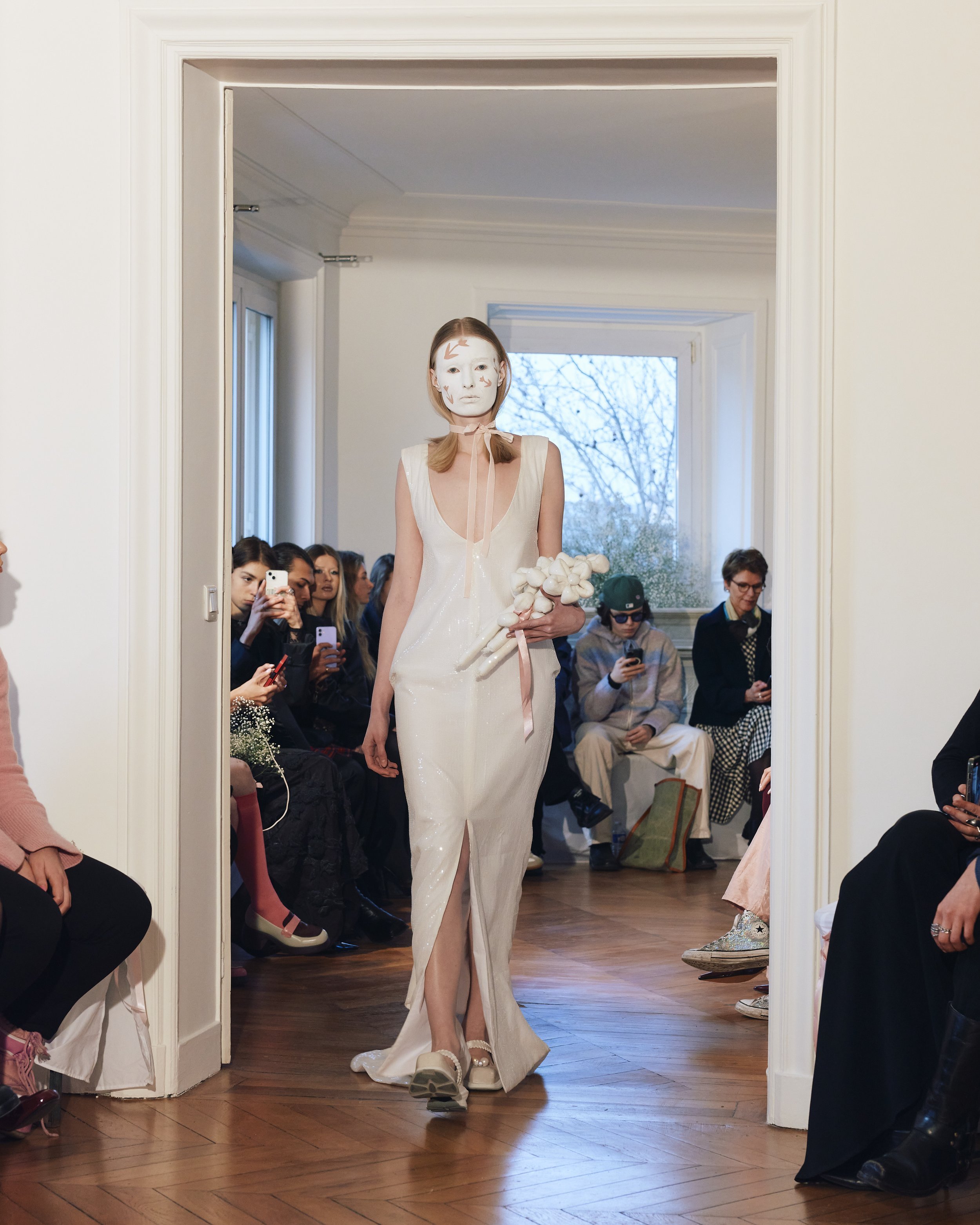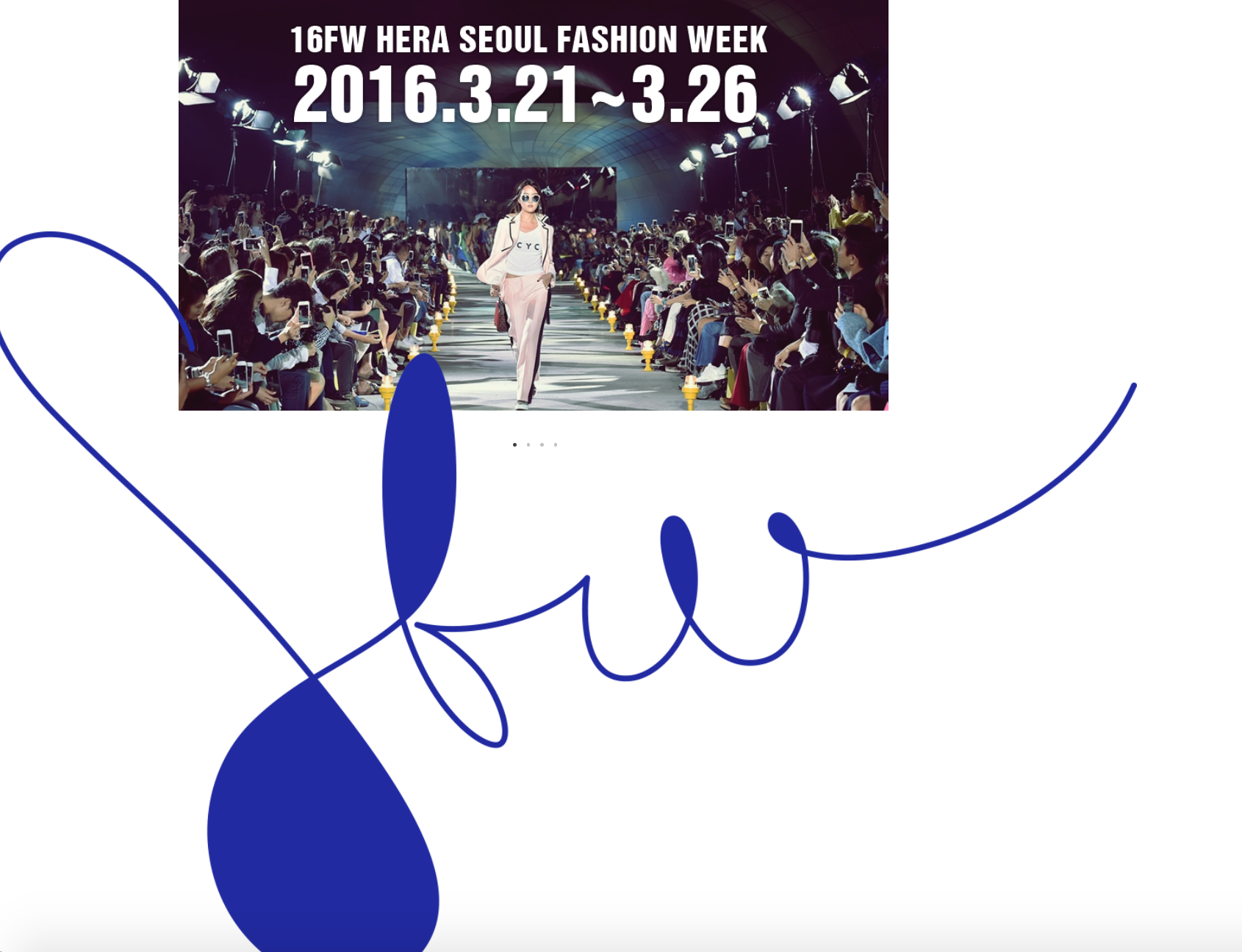A Review of FW24 Fashion Week Shows
Paris Haute Couture
Schiaparelli
With its Y2K motifs and call-back to the beginnings of the digital era, some of the most prominent looks from Daniel Roseberry’s Schiaparelli included the “robo-baby” and “microchip board dress”, where Roseberry described it as “a motherboard-and-strasse microchip dress encrusted with pre-2007 technological artifacts—now, the technology I grew up with is so antiquated that it’s almost as difficult to source as certain vintage fabrics and embellishments.” The use of these “technological artifacts” creates a post-apocalyptic feel to these looks, where such motifs are often seen in steam-punk-inspired pieces of media. What was interesting to me was that while steam-punk aesthetics consist of 19th century industrial materials, Roseberry’s looks follow a similar thread while using technological artifacts of the early 2000s instead. Steampunk to me has always created a retro-feel and surprisingly, the same was achieved through Roseberry’s looks, leading to the shocking revelation that the 2000s were in fact more than two decades ago.
The rarity of these “technological artifacts” compared to “vintage fabrics” is particularly interesting when pondering the differences in the valuation of them: while technological artifacts are—at least to my observation—seen by the creative community as less valuable than vintage fabrics, they carry the same era-specific indications of these decades and are equally a product of human innovation and arguably the human touch.
As a jewelry lover, this lobster necklace—so delicately and seamlessly incorporated into the neckline of the dress and reminiscing a halter top—caught my attention, especially because of the clear reference to Schiaparelli’s founder’s—Elsa Schiaparelli’s—work with Salvador Dalí in her lobster-painted dress. Because Roseberry has not previously utilized this reference in his prior years at the fashion house, the use in this year’s show was a welcome surprise.
The use of gold in the lobster necklace followed the obvious theme of the iconic Schiaparelli gold: the color they use to encrust eclectic objects and animals. Whether it be the memorable shoes with golden toes (literally, human toes!) for eyes, Schiaparelli has always been experimenting with body parts and things that are very much alive but, when painted in gold, made to be sculptural and symbolic. It was the Schiaparelli gold that first drew me to the fashion house, and seeing it incorporated in the lobster necklace made the collection very cohesive with the brand’s DNA for me. I particularly have always loved Schiaparelli’s mix of the living and art, where its golden colors memorialize these living creatures into cultural artifacts.
Elsa Schiaparelli once told a journalist “Novelty and exaggeration was my motto then, and I've proved I am right.” To me, there is nothing more stylish and tasteful than curated exaggeration, and Schiaparelli has been second to none in that regard. Once again, the beautiful contrast between black, white, and gold make this an eye-catching outfit, but it was the gold belt buckle accents in particular that stood out to me, along with the wide, seemingly padded shoulders and huge collars.
The exaggeration aspect in this look is obvious: from the many belts to the collar to the shoulders, I think this look encapsulated the idea of haute couture mixed with mainstream fashion quite well. While many would think it a crime to use the word “haute couture” with “mainstream fashion” in the same sentence, I believe there is nothing more flattering than imitation and it seems Schiaparelli is once again unknowingly or unintentionally setting fashion trends abuzz.
Belts have been seen everywhere this fashion week as well as on the streets. From last year’s mainstream “coastal cowgirl” and Western-styled fashion, it is no surprise that belts are making a comeback. In this case, the mixture of a classic accessory with the surprising element of exaggeration shows that Schiaparelli is both up-with-the-times but also individualistic in maintaining its brand’s thematics.
Maison Margiela
Maison Margiela’s haute couture show has to be—at least from what I’ve observed—the most talked about show at Paris Haute Couture Fashion Week 2024, and it may just be justified. Every element in this show was so finely detailed and well thought out; from Pat McGrath’s insane, porcelain-style makeup to the satisfying amount of attention given to accessories to the set-up of the runway itself, this runway show did something many runways have recently failed to do: tell a story.
First, the makeup! Pat McGrath was finally given her well-deserved flowers, creating one of her most iconic looks: a sheen, porcelain doll-like makeup. Everyone from influencers to fashion critics were buzzing about the look, where online a plethora of people strove to recreate it. It was refreshing to see Margiela’s attention to detail, including the makeup which contributed to the storyline. The doll-like makeup look was an allusion to 19th century fashion dolls, which were used to spread the then in-trend fashion looks to different cities. Instead of printed magazines, the dolls would be adorned with the latest looks and presented to the rich and noble. This was a practice often found in France; a wonderful allusion to the birthplace of Maison Margiela and the setting of this fashion week.
Gwendoline Christie stunned as the closer of the show, which was personally a surprise to me, not because I did not expect her to pull it off but rather because of the rarity of seeing a non-professional model as a closing act. (Quick note, this now makes me think of Miu Miu’s iconic move on letting Qin Huilan, an avid Miu Miu customer and doctor, walk a show)
The use of non-models, reflected both in Margiela’s show, and as of recent Miu Miu’s, recalls the importance of identity in fashion presentation. Christie delivered emotions that are less seen in traditional models in her bodily movements and facial expressions, contributing greatly to the story-telling aspect of the show.
Not to mention that this was one of my favorite looks from the makeup to the almost artificial and doll-like curls, the dress that looks both plastic and silky and the exaggerated corset is a perfect articulation of Galliano’s vision.
Of course, one cannot critique the Maison Margiela show without looking at the story itself; with the fashion varying from escalated and vintage-reminiscent looks (like that of Christie) to more rugged and avant garde looks like the one pictured above, the show seemed to focus on a diverse group of people, all united on the same runway. The runway in question, that is, being an underground tunnel made to look like those in the dark corners of Paris. The undertone of rebellion and the rallying of fashion outcasts wearing porcelain-looking artificial “masks” tells a beautifully cohesive story of the “outcasts” of society who rally together in Paris. There is no better fashion show than that of Paris’ Haute Couture Week to bring this message about.
Paris Fashion Week
Florentina Leitner
If there is one word I could use to describe Florentina Leitner’s A/W show at PFW, it would be “youthful.” Not in the sense of innocence and naivety, but rather in the sense that Leitner delivers a show that is up-and-coming with the times, with ready-to-wear pieces that emulate—or perhaps even set—the trends that are observed on the streets of Paris, New York, and on the likes of fashion-inclined people. From ribbons and bows to pastels and bubble skirts, Leitner, to me, has always been a designer to watch. Her outlook is refreshing; because of her still-growing foothold in the fashion industry, she does not yet have a long brand history that precedes her. I suspect that this gives her, along with any new designer, the higher degree of freedom of exploration and non-traditional styling. While the big fashion houses like Chanel, Dior, or Lanvin have well-settled brand DNAs that are arguably less dynamic due to its long history, newer fashion houses and designers have the flexibility in crafting a vision that is modern and experimental.
Particularly, the painted on mask and balloon flowers reminded me of a carnival, while the dress itself with its minimalistic but effortless drapery added to the whimsicalness of the show. Seeing this show solidified my grouping of Leitner into what I can only describe as “whimsically pink designers”, including Simone Rocha, Sandy Liang, and Cecile Bahnsen. All of these designers favor ribbons, bows, poofy skirts, and oversized fits with constant pastels and a sprinkle (or a bucketful) of femininity. What I think Leitner does well, however, is add nuance to this theme: instead of diving head-first into this feminine and youthful approach, Leitner adds mystery and experimental approaches with her accessories and makeup.
These two looks, I believe, very well support my argument that Leitner is a designer for the 21st century and arguably for Gen Z. From the bubble skirt to the bows on the shoulders and socks and then the fur trim on the right along with statement earrings, Leitner seems to be echoing the trends that we are seeing on the high street. While it is a chicken or the egg situation (and arguably what is birthed on runways is then fed to the common people), it is still wonderful to see an elevated, tasteful version of styles that are usually quickly dismissed as “microtrends.” What exactly, then, separates high street trends from fashion week looks, if anything but the streamline in which they are connected and the delivery of the fashion?
Dries Van Noten
When I first saw looks by Dries Van Noten, I found myself thinking of two classic and big fashion houses. I could only describe the runway looks as either “2000s Gucci but with pastels and embellishments” or “Loewe if Jonathan Anderson took anti-depressants and had his idealization suppressed.” Neither of these are an insult, by the way, because I absolutely adored Dries looks. Perhaps it is because I never really got into Dries Van Noten, but seeing the show and its beautiful work with silhouette and color made me a certified fan.
The color work was one of the most spectacular elements of the show, pairing together pastels in a way that did not scream “it’s Easter and my mother made us all wear corresponding pastels.” The contrast between pastels and slightly more muted colors (like the blue and green pictured above) is one that I am taking notes for when I come up with outfits.
And it wasn’t just the color work that was cohesively but excitingly put together: the drapery also certified the brand as one that could pull-off playing with silhouettes without looking messy. I have always been a lover of designers and fashion houses that played more on silhouettes than patterns or colors, and particularly this look above made me want to keep looking and asking to myself, “Is that a hoodie draped onto a tee draped onto short” or “are these layered or are they all sewn together by the seams?”
Conclusions
Was I enthralled by this fashion month? Yes, but honestly only with Schiaparelli and Margiela’s shows. The rest seemed to be within the usual pattern of the brand, which I suppose is good considering the consistency. However, what I was most excited about were the new faces of designers like Leitner and the increased attention given to smaller fashion weeks like Copenhagen Fashion Week (although unmentioned in this review). Overall, I found that contemporary and more if-you-know-you-know fashion houses shone brighter than the more mainstream (say Gucci, Dior, you know the works), which was a revelation that is certainly not exclusive to this season.

















